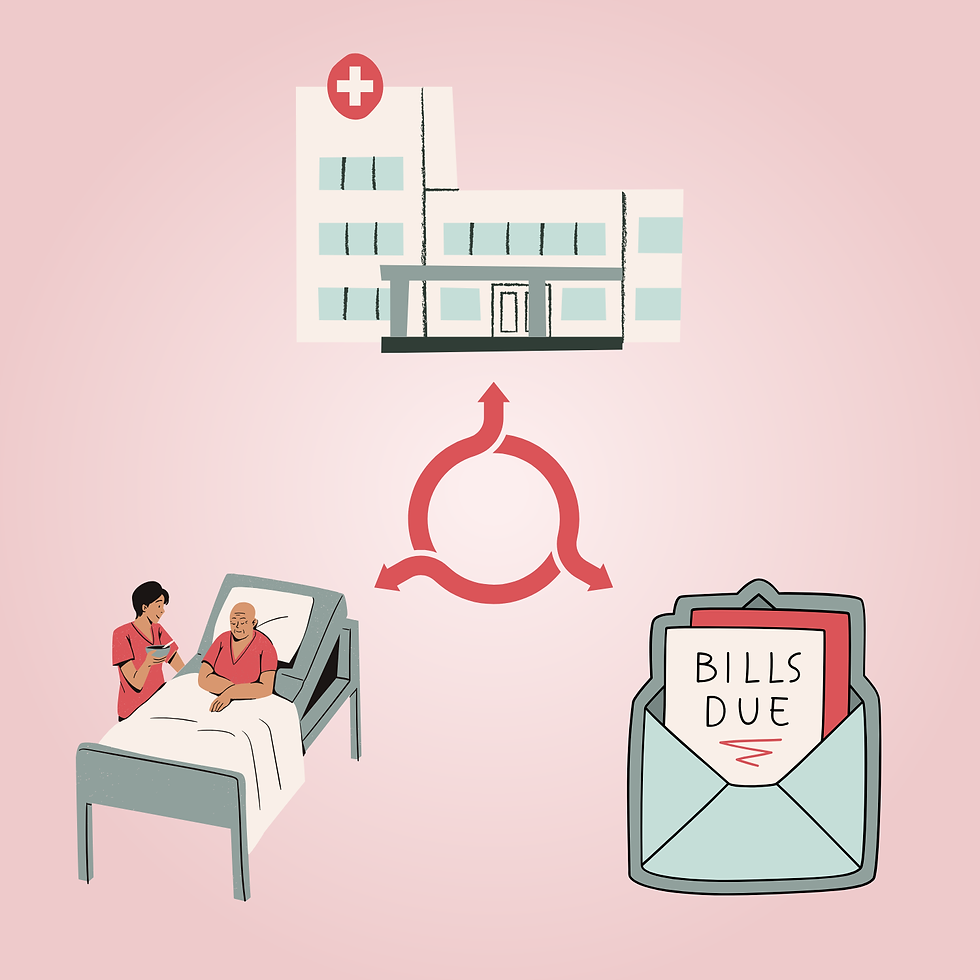Behind the Scenes - the Truth Behind our GDP
- Emily Hanna
- Oct 12
- 3 min read
The United States is historically well-known for many things, one being our rapid advancement. We have been a dominating power in economics, politics, and of course, healthcare. The United States has very technologically advanced healthcare resources that remain nearly unparalleled. While one may assume that this would cause the United States to have a similarly amazing healthcare system, this is not entirely true. In fact, a huge portion of the USA’s GDP goes towards the healthcare system. What factors contribute to America’s expensive healthcare? That’s exactly what we’re going to discuss here.

The United States continues to have many scientific advancements that further promote medicine, but this unfortunately doesn’t have all positive consequences. Firstly, medical technology advancement is attractive to both doctors and hospitals. The more technological advancements a practice has to have, the more resources the physicians have at their disposal and, as such, is part of why certain doctors are attracted to certain job locations over others. However, this medical equipment serves as an investment, and doctors and hospitals alike want to make the most of them. As such, this leads to an increase in equipment usage, possibly even unnecessarily, contributing to the cost of the high GDP expenditure on healthcare. Furthermore, many doctors practice the concept of defensive medicine. Defensive medicine is where a doctor orders a surplus of tests, oftentimes that are unnecessary, utilizing these medical technologies in an effort to protect them from any medical malpractice suits. Not only is this unethical (focusing on the self-interest of the physician rather than the health of the patient, violating their oaths), but it also serves to further drive the portion of GDP used on healthcare up due to the costs.
In addition, another cause that increases healthcare expenses is medical entrepreneurship - a concept that turns medicine into a for-profit business. Medical entrepreneurship consists of many different factors - corporate profits, administrative costs, high CEO salaries, and medical fraud. There are many things to unpack here, but the most important and expensive factor is the administrative costs of healthcare (mainly including patient billing). The fact that administrative costs contribute to the inefficiency of the healthcare system is astounding but the harsh truth. Not only does billing take up the physicians’ time, but it also takes up a large chunk of resources that can be better distributed throughout the healthcare system. Many people argue that this money could be used to fund Medicaid whilst others argue that it can be used to form a universal insurance and flow back into the economy.
Regardless of either side or opinion, it is clear that many people in America remain unsatisfied with the American healthcare system - even after the healthcare reform that occurred following the Affordable Care Act. There are many other factors that play a role in the high cost of American healthcare, but these are some that remain outstanding to many sociologists due to the lack of medical necessity. While we have had many reforms regarding our healthcare system in recent decades, it is clear that our work is not done and much needs to be reformed - one of which being the high cost yet low efficiency of the system.
Reviewed By: Abby Winslow
Designed By: Lexi Field
References:
[1] LONNQUIST, Lynne E., and Gregory L. WEISS. (2006). The Sociology of Health, Healing, and Illness Gregory L. Weiss, Lynne E. Lonnquist. Pearson Prentice Hall, 2006.



Comments